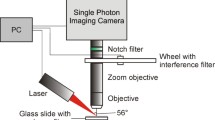Abstract.
Commercially available polymers often exhibit quite poor laser ablation properties for irradiation wavelengths around 248 nm. At these wavelengths, the absorption is due to photostable aromatic groups. Photolabile triazene polymers were developed to compare the influence of a photolabile group on the laser ablation process. The photochemically active triazene group has a strong absorption band at 332 nm, whereas the second absorption maximum at 220 nm is due to the photostable aromatic group. By irradiating at 308 nm and 193 nm, the influence of the photochemically active group on the ablation process can be studied. The etching of the triazene polymer starts and ends with the laser pulse. No surface swelling, which is assigned to photothermal ablation, is detected for fluences above the threshold of ablation. The expansion of the laser ablation induced shockwave was measured for the photolabile triazene polymer and the photostable polyimide. The speed of the shockwave increases with fluence and is higher for irradiation with 193 nm than with 308 nm. A shockwave with equal or higher velocity is observed for the triazene polymer compared with polyimide.
Similar content being viewed by others
Author information
Authors and Affiliations
Additional information
Received: 28 August 2002 / Accepted: 20 September 2002 / Published online: 28 May 2003
RID="*"
ID="*"Corresponding author. Fax: +41-56/310-4412, E-mail: thomas.lippert@psi.ch
Rights and permissions
About this article
Cite this article
Hauer, M., Funk, D., Lippert, T. et al. Laser induced decomposition of a designed and a commercial polymer studied by ns-interferometry and shadowgraphy . Appl Phys A 77, 297–301 (2003). https://doi.org/10.1007/s00339-003-2117-5
Issue Date:
DOI: https://doi.org/10.1007/s00339-003-2117-5




